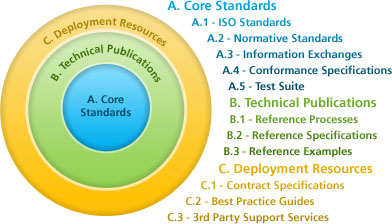The transformation in the building industry fostered by the evolution from use of analog drawings and text to the use of digital electronic Building Information Modeling (BIM) is comparable to the transformation that has already occurred in the aircraft, microprocessor, and automotive industries. Early definitions, which assert that BIM is simply a 3D model of a facility, are far from the truth and do not adequately communicate the potential of digital, object-based, interoperable building information modeling processes and tools and modern communications methods. As defined in the original NBIMS document: "A BIM is a digital representation of physical and functional characteristics of a facility. As such, it serves as a shared knowledge resource for information about a facility forming a reliable basis for decisions during its lifecycle from inception onward." If implemented, nearly every piece of information that an owner needs about a facility throughout its life can be made available electronically. The industry, however, does not yet have the open standards and infrastructure in place to capture, organize, distribute, and mine that information. Our goal with the National Institute of Building Sciences Building Information Management (BIM) Council (formerly buildingSMART alliance®) is to establish, through the NBIMS-US Project, the standards needed to foster innovation in processes and infrastructure so that end-users throughout all facets of the industry can efficiently access the information needed to create and operate optimized facilities.
The beneficiaries of BIM include owners, planners, realtors, appraisers, mortgage bankers, designers, engineers, estimators, specifiers, safety professionals, occupational health officials, environmentalists, contractors, lawyers, contract officers, sub-contractors, fabricators, code officials, operators, risk managers, renovators, first responders and demolition contractors. Each person has their own view of the information and many share the same information. Some involved supply information, some use information and some do both. For all this information to be useful, it must adhere to open standards.
The NBIMS-US Project Committee (National BIM Standard-United States Project Committee), is a project committee of the Building Information Management (BIM) Council. Originally chartered in 2005 as the Facility Information Council (FIC), the NBIMS Committee was re-chartered as an Alliance project in 2008, to consolidate missions and streamline services. From 1992 to 2008, the FIC mission was to "improve the performance of facilities over their full lifecycle by fostering common and open standards and an integrated lifecycle information model for the A/E/C & FM industry." Although FIC was sunsetted in 2008, its mission continues under the governance of the Alliance. The NBIMS-US Project Committee continues this tradition by knitting together the broadest and deepest constituency ever assembled for the purpose of establishing and managing through an industry consensus process a series of open source National standards and guidance for all aspects of building information modeling. The NBIMS Charter spells out the Committee's vision and describes the results NBIMS-US expects to achieve.
The Scope of the National BIM Standard-United States® V3
The scope of the National BIM Standard-United States® V3 is built around the concept of ever-increasing levels of importance, with International Standards at the center. Even with ISO standards, there is a hierarchy with fully vetted standards having the highest level of criticality and acceptance. Draft International Standards (DIS) are next and Publicly Available Standards (PAS) are third. The complete hierarchy is provided in the following diagram:



